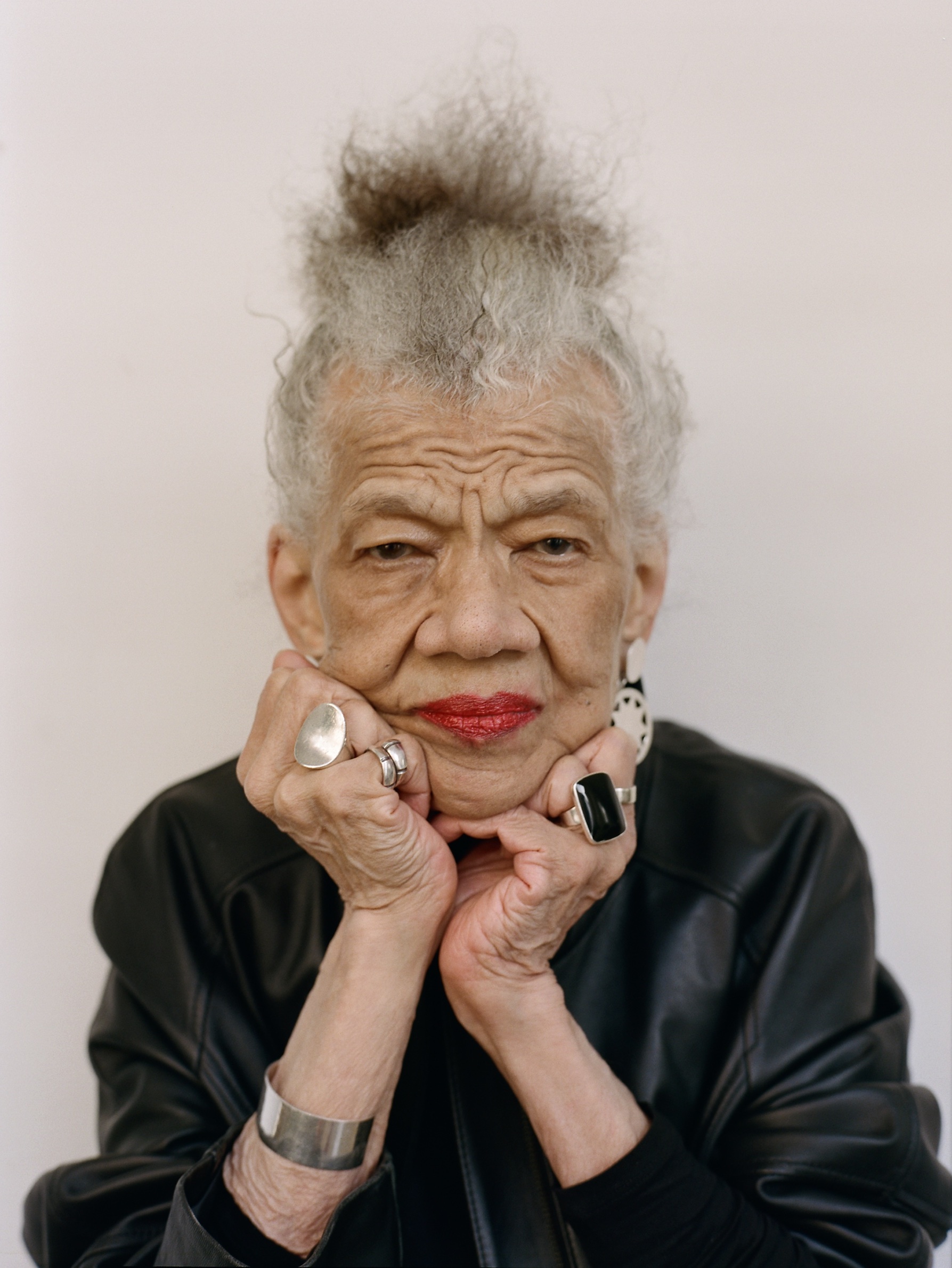Conceptual artist and critic Lorraine O’Grady, known for pivotal works that subverted the binaries of Western thought, died at the age of 90 in New York City on Friday, December 13. O’Grady has left an indelible impact across nearly five decades of performance, film, photography, collage, and text-based analysis that both contribute to and critique the contemporary arts sphere from a Black feminist perspective. The news of her death was confirmed by Mariane Ibrahim Gallery, which began representing the artist last year.
O’Grady was born in 1934 to a middle-class immigrant Jamaican family in Boston, Massachusetts, where her parents Edwin and Lena were instrumental in establishing the first West Indian Episcopal church in the area. She was deeply impacted by the aesthetics of Episcopalianism but lost her faith during her mid-20s after the unexpected death of her only sister, Devonia Evangeline. O’Grady was educated in the city’s Girls’ Latin School and went on to graduate from Wellesley College with a degree in Economics and a minor in Spanish Literature. Soon after receiving her degree, she opted to find stability by working for the federal government, having cleared the challenging Management Intern Program exam as one of only six women and 200 total individuals who passed out of 20,000 candidates.
The dawn of O’Grady’s art career was decades away as she worked for the Department of Labor as a research economist at the Bureau of Labor Statistics — which she described as a boys’ club and difficult to navigate as a single mother at the time. Finding no upward mobility, she switched gears and pivoted to translation while living in Chicago with her second husband, where she flourished due to her early education in Latin and her studies in Spanish literature. After an incomplete graduate education in fiction writing at the University of Iowa, she moved into writing as a rock music critic for the Rolling Stone and the Village Voice in the early ’70s.
Her visual arts endeavors started with Cutting Out the New York Times (1977), a collage series that O’Grady embarked on after accepting a position teaching literature at the School of Visual Arts and becoming interested in the works of the Futurists, Dadaists, and Surrealists. For 26 consecutive Sundays, she trimmed snippets of headlines from the publication and reorganized them to form her own poetry, which she has referred to as her first artwork.

Then came “Mademoiselle Bourgeoise Noire,” a persona who donned a gown and cape made from 180 white leather gloves stitched together whom O’Grady embodied in performances from 1980 to 1983. The artist debuted the character, who was modeled after a ’50s pageant queen, at the Black-owned avant-garde gallery Just Above Midtown (JAM), turning heads by lashing herself with what she called “the whip-that-made-plantations-move” and shouting poetry. The piece targeted NYC’s art institutions for racial discrimination and Black artists whom she found to be suppressing their true sense of self to cater their practices to White audiences and collectors. Mademoiselle Bourgeoise Noire “invaded” exhibition and gallery openings throughout the city for three years, including at the New Museum for Contemporary Art.
This fierce foray into performance art opened the floodgates for O’Grady, who soon staged her second performance work at JAM. “Nefertiti/Devonia Evangeline” (1980) not only analogized her relationship to her late older sister Devonia to that of Nefertiti and her younger sister Mutnedjmet, but also critiqued Black artists’ attempts to attach themselves to broader African traditions through their practice and the prevalence of racism in the field of Egyptology. Singular, site-specific performances such as “Rivers, First Draft” (1982) and “Art is …” (1983) followed soon after.

O’Grady began integrating photographic media into her practice after a years-long withdrawal from the arts precipitated by her mother’s declining health, specifically deploying the diptych in her artistic critiques of “both/and” and “either/or” binaries. Using family photos, archival images, and experimental photography and footage of herself, the artist’s serial photomontages often navigated the intersections of race, class, gender, sexuality, colonialism, and documented histories through confrontational and discomforting juxtapositions.
O’Grady was a fervent writer and critic in addition to her art practice, making waves in 1992 with her seminal essay “Olympia’s Maid,” which identified the blatant lack of scholarly attention to the Black servant depicted in Édouard Manet’s “Olympia” (1863) (painted after the Black model Laure) as a prime example of prejudice in the fine arts.
“Olympia’s maid, like all the other ‘peripheral Negroes,’ is a robot conveniently made to disappear into the background drapery,” O’Grady wrote in the essay. “Laura’s [sic] place is outside what can be conceived of as woman. She is the chaos that must be excised, and it is her excision that stabilizes the West’s construct of the female body, for the ‘femininity’ of the white female body is ensured by assigning the not-white to a chaos safely removed from sight.”

In 2020, the Duke University Press published Lorraine O’Grady: Writing in Space (1973–2019), edited by critic Aruna D’Souza, spotlighting the artist’s writing from her time as a rock music critic throughout her artistic career, incorporating her interviews, scholarly essays, and performance transcripts that canonized the written word as essential to her practice. That same year, Hyperallergic published O’Grady’s essay that was included in Boston’s Apollo, Thomas McKeller and John Singer Sargent, including several photos documenting the artist’s upbringing in the Boston neighborhood of Roxbury.
O’Grady became the subject of newfound institutional appreciation in recent solo shows, group exhibitions, and profiles, as well as in her 2021 retrospective at the Brooklyn Museum. Many of her works have found homes in the collections of the Art Institute of Chicago, the Brooklyn Museum, the Museum of Modern Art, the Los Angeles County Museum of Art, the Pérez Art Museum Miami, and several others.
O’Grady is survived by her son and daughter-in-law, Guy David Jones and Annette Olbert Jones, her three grandchildren, and her eight great-grandchildren.



